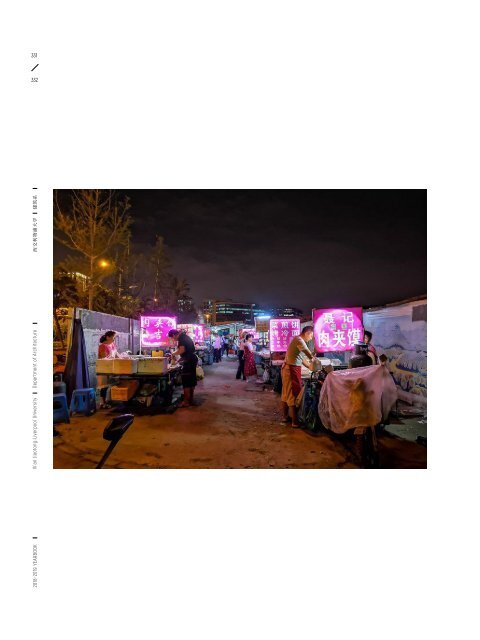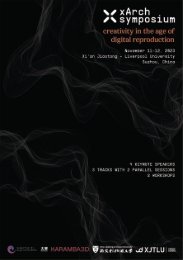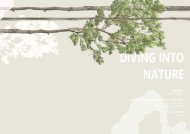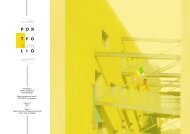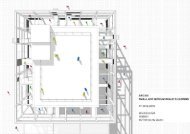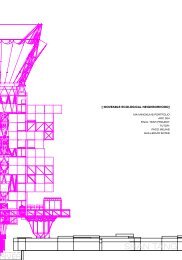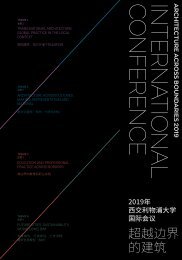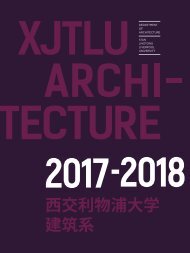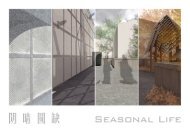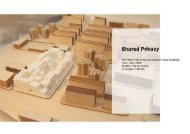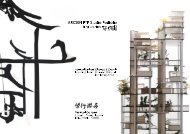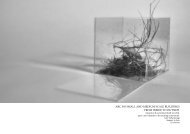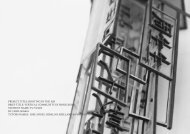YEARBOOK 2018 - 2019 | XJTLU DEPARTMENT OF ARCHITECTURE
The sixth edition of the yearbook of the Department of Architecture at Xi'an Jiaotong-Liverpool University presents student works created during the academic year 2018 - 2019. The yearbook exemplifies the new model for Chinese architectural education for which the department was commended by the Royal Institute of British Architects (RIBA). It is also a showcase of the creative culture that has guided our students towards successful international careers as responsible and creative architectural designers. The Department of Architecture at XJTLU offers RIBA Part 1, 2 and 3.
The sixth edition of the yearbook of the Department of Architecture at Xi'an Jiaotong-Liverpool University presents student works created during the academic year 2018 - 2019. The yearbook exemplifies the new model for Chinese architectural education for which the department was commended by the Royal Institute of British Architects (RIBA). It is also a showcase of the creative culture that has guided our students towards successful international careers as responsible and creative architectural designers. The Department of Architecture at XJTLU offers RIBA Part 1, 2 and 3.
Create successful ePaper yourself
Turn your PDF publications into a flip-book with our unique Google optimized e-Paper software.
331<br />
332<br />
ARCHITECTURAL DEVICES<br />
AS CATALYSTS FOR URBAN<br />
TRANSFORMATION<br />
<strong>2018</strong>-<strong>2019</strong> <strong>YEARBOOK</strong> Xi’an Jiaotong-Liverpool University Department of Architecture 西 交 利 物 浦 大 学 建 筑 系<br />
Guillermo Sánchez Sotés<br />
PhD Candidate<br />
Department of Architecture<br />
Xi’an Jiaotong-Liverpool University<br />
Chinese urban environments are experiencing significant changes due<br />
to rapid modernisation. The prevalence of top-down planning results<br />
in generic urban environments that presume generic inhabitants<br />
and remain indifferent to their inhabitants’ ways of living. On closer<br />
observation, citizens can, however, be observed to adapt these generic<br />
urban spaces, often with simple but effective means. Socio-Economic<br />
entropy is seen in Chinese urban development; for creating order,<br />
some degree of disorder is inevitable in somewhere1. One can observe<br />
a range of objects and devices on various scales – from small furniture<br />
to temporary structures – being used to transform spaces to produce<br />
markets, breakfast spaces, sites for entertainment and learning, and<br />
much more.<br />
Very often chemical and biological analogies are used for illustrating<br />
the city such as ‘catalyst or metabolism’. Growing and reproducing are<br />
attributes of the constant change of the cities, where the adaptation<br />
of public space by informal artefacts/activities can be seen as an<br />
autopoietic system where the system as a whole produces and replaces<br />
its components. This project investigates these artefacts as indicators of<br />
shortcomings in current urban planning approaches and aims to clarify<br />
the notion of autopoiesis in its various applications in (architectural)<br />
theory. The urban process and the role of temporary/mobile architecture<br />
in Suzhou Industrial Park will serve to illustrate and exemplify this<br />
discussion.<br />
1 Rudolf Clausius in 1855 defined entropy as a way of describing how the things<br />
interact by interchanging energy and resources.<br />
Research


